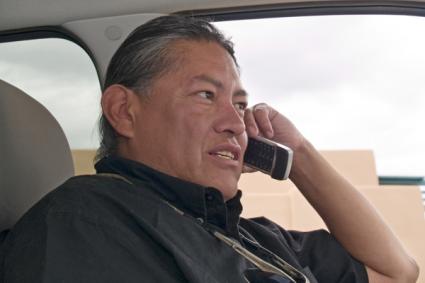< Back to all interventions for Treatment of Alcohol Use Disorder
Telephone Aftercare Project
Monthly telephone contacts for reservation-dwelling clients after discharge from residential treatment.
American Indians who completed a formal, culturally specific, 45-day residential treatment program were provided a “step-down” module of supportive aftercare services when they returned to their reservations. After discharge, participants were contacted monthly for a brief 10-minute check-in via phone and asked about substance use behaviors. During the 3- and 6-month post-discharge interviews, participants were interviewed about other life domains (e.g., social, familial, justice). There was no control group, a substantial refusal to participate, and a low follow-up rate.

Outcomes
Among the small number responding to follow-up calls, significant reduction in relapse rate, drinking days, and intoxication.
This study suggests that aftercare services provided over the phone are associated with decreased alcohol and other substance use and improved interpersonal relationships up to 6 months after treatment. Of the overall sample, 87%reported past 30-day alcohol use at intake into the residential program. For those reached for interviews at 3 and 6 months, 15% to 19% reported alcohol use. When considering those who were not interviewed and assumed to have relapsed, use of alcohol would range from 43% to 73%. Among clients who reported alcohol use at 6-month follow-up, the number of drinking days and days of drinking to intoxication were significantly lower than at baseline. These reductions did not remain significant when considering those lost to follow-up.
Costs
Low-cost telephone intervention.
Using phone contacts for aftercare is considered to be a cost-effective and convenient approach for “step-down” aftercare intervention.
Cultural Engagment
No information on cultural adaptation or Tribal input.
There is no mention of cultural adaptation or Tribal input into the aftercare intervention.
Participants
Young Adult, Adult; Native; Female, Male
Setting
Home, Reservation
Delivery
Individual, Telephone Call
American Indian clients contacted by telephone at their reservation homes.
This study initially recruited 30 American Indian adults; mean age 31.1 years (range 19 to 46 years), 21 females and 9 males, who completed a residential alcohol treatment program in Arizona. Eleven of these 30 adults selected did not continue with the study, 8 adults refused, and 3 did not meet with the aftercare counselor prior to discharge. Participants received the telephone aftercare intervention after they returned to their Southwest reservation home settings.
Staffing Needs
Not Specified
No information on credentials or background of staff.
This study does not discuss the staffing needed to implement the intervention.
Research Design
Pre-/post-intervention data
Developmental stage of research
This program evaluation lacked details about several important components.
The main aim of this study was to assess the feasibility of providing aftercare contacts over the phone after treatment and to provide preliminary outcomes. Implementation of this research within a much larger sample—with appropriate controls, description of the aftercare calls, and less attrition/loss to follow-up—is needed to examine fully the efficacy of this intervention.
Potential
Supportive aftercare calls made to American Indians returning to reservation homes may improve outcomes.
Although the form, number, and content of the telephone aftercare intervention were not described, this study suggests that supportive phone contacts may augment the effect of residential treatment for substance abuse. The aftercare calls are feasible for reservation residents and may help reduce alcohol consumption and associated problems post-treatment. This cost-effective intervention suggests feasibility and potential for effectiveness in American Indians returning to their reservations after completing formal treatment.
References
Chong J, Herman-Stahl M. Substance abuse treatment outcomes among American Indians in the Telephone Aftercare Project. J Psychoactive Drugs. 2003;35(1):71-77. https://pubmed.ncbi.nlm.nih.gov/12733761. https://doi.org/10.1080/02791072.2003.10399996.
< Back to all interventions for Treatment of Alcohol Use Disorder

